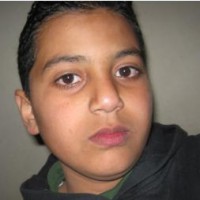Maxillofacial trauma and psychological stress 楊幽幽 杨幽幽
Maxillofacial trauma, the hard and/or soft trauma to the maxillofacial region, may involve fracture of dental tissue, the mandible [1-4], zygomatic bone [1-4], maxilla [1-4], nasal [1,2] and frontal bone [1-3] There may also be concomitant abrasion [5-7], laceration [5-8] or contusion of soft tissues [5-7]. It is often a painful experience in body and soul, given that it could easily be a life and death experience from sports [1,9], falls [1,5,9,10], physical contact [1], violence [10], … to road traffic accidents [1,5].
Treatment for maxillofacial trauma may vary from simple observation [11] to splinting [2,9], wiring [2,9,11], extractions [9], or open [8,9,11]/ closed reduction [8,11] with/ without internal fixation with bone plates [8, 9, 11]. Each stage of management from the initial presentation, treatment and rehabilitation and recovery and follow-up may all post severe blows to the already traumatized patient. Such patients may be faced not only with aesthetic [20] but also functional issues [16,20].
Single or multiple surgical interventions may be necessary. Eventual healing and rehabilitation could feel forlorn with uncertain outcome. On top of all these, other boggling issues include financial ability [13], social aspect [12], employment issues [12,13] and underlying medical issues [13], etc. A lot of such trauma patients tend to be associated with increased social anxiety and avoidance [14,15], depression [14,15], low self-concept [12,16], problems with relationships [12] and difficulties with employment [15]. All these does appear to negatively impact on the quality of life of such patients [16-18].
Often, cultural acceptance [12] and social support [17] plays an important role in the psychological wellbeing of such patients [12,19]. Consequently, it is not difficult to imagine that patients suffering from maxillofacial trauma could have adjustment and adaptation issues stemming from both the trauma and treatment for the trauma [13]. Some such patients may have to come to terms with change in appearance [12,18], aesthetics [12] and functional issues [13,14,16] that may correlate more to the subjective severity of either the surgical operation or outcome [14,15,19,20].
It had been reported that the degree of anxiety in patients was directly proportional to the magnitude of injury and the resulting scar [18]. There has been technological advances to avoid scars [2,11]. On the other hand, it has been reported that approximately 20% - 40% of patients suffering from maxillofacial trauma may still develop post-traumatic stress disorder [13-15,20]. Islam et al’s study [20] has shown a nine-fold increase in the risk of depression (odds ratio of 9.02) and a two-fold increase in anxiety disorder (odds ratio or 2.68) in participants with facial trauma. Similar results were obtained in Gandjalikhan-Nassab et al’s 2016 study [18].
One resulting concern for the healthcare team is that psychological
stress of patients may potentially complicate recovery and adversely affect
patient compliance [20]. As such, assessment and provision of psycho-emotional
support to patients suffering from maxillofacial trauma, an area less studied,
has been gaining interest and importance and protocols put forward [12,13,18,19].
References
1. Scartezini GR, Guedes OA, de Alencar AHG, de Araujo Estrela CR, Estrela C. Maxillofacial trauma in a public hospital in Central Brazil: A retrospective study of 405 patients. Journal of Dental Science 2016; 31(4): 153-157.
2. Ahmed A, Ahmed W, Bukhari SGA, Janjua OS, Luqman U, Qayyum MU. The maxillofacial trauma management trends at Armed Forces Institute of Dentistry, Rawalpindi. Pakistan Oral & Dental Journal 2012; 32(2): 191-195.
3. Ruslin M, Wolff J, Boffano P, Brand HS, Forouzanfar T. Dental trauma in association with maxillofacial fractures: an epidemiological study. Dental Traumatology 2015; 31: 318-323.
4. Shaikh MI, Rajput F, Khatoon S, Usman G. Etiology and incidence of maxillofacial skeletal injuries at tertiary care hospital, Larkana, Pakistan. Pakistan Oral & Dent J 2014; 34(2): 239-241.
5. Bajwa SJS, Kaur J, Singh A, Kapoor V, Bindra GS, Ghai GS. Clinical and critical care concerns of cranio-facial trauma: A retrospective study in a tertiary care institute. National J Maxillofac Surg 2012; 3(2): 133-138.
6. Channar KA, Memon AB, Shaikh IA, Punjabi SK, Shumaila. Pattern and causes of maxillofacial trauma among senior citizens. Pakistan Oral & Dental Journal 2016; 36(3): 372-374.
7. Ferreira MC, Batista AM, Ferreira F O, Ramos-Jorge ML, Marques LS. Pattern of oral-maxillofacial trauma stemming from interpersonal physical violence and determinant factors. Dental Traumatology 2014; 30: 15-21.
8. Jung TK, De Silva HL, Konthasingha PP, Tong DC. Trends in paediatric maxillofacial trauma presenting to Dunedin Hospital, 2006 to 2012. New Zealand Dent J 2015; 111(2) :76-79.
9. Grover D, Aggarwal A, Sharma P. Pediatric maxillofacial trauma. Indian J Stomatol 2011; 2(2): 80-85.
10. Al-Qamachi LH, Laverick S, Jones DC. A clinico-demographic analysis of maxillofacial trauma in the elderly. Gerodontology 2012; 29: e147-e149.
11. Ul Haq E, Liaquat A, Aftab A, Mehmood HS. Etiology, pattern and management of maxillofacial fractures in patients seen at Mayo Hospital, Lahore – Pakistan. Pakistan Oral & Dental Journal 2014; 34(3): 417-421.
12. Bradbury E. Meeting the psychological needs of patients with facial disfigurement. British J of Oral and Maxillofac Surg 2012; 50: 193-196.
13. De Sousa A. Psychological issues in oral and maxillofacial reconstructive surgery. British Journal of Oral and Maxillofacial Surgery 2008; 46: 661-664.
14. Islam S, Cole JL, Walton GM, Dinan TG, Hoffman GR. Psychiatric outcomes in operatively compared with non-operatively managed patients with facial trauma: Is there a difference? J Plast Surg Hand Surg 2012; 46: 399-403.
15. Islam S, Ahmed M, Walton G, Dinan TG, Hoffman GR. The prevalence of psychological distress in a sample of facial trauma victims. A comparative cross-sectional study between UK and Australia. J Cranio-Maxillo-Facial Surg 2012; 40: 82-85.
16. Ukpong EI, Ugboko VI, Ndukwe KC, Gbolahan OO. Health-related quality of life in Nigerian patients with facial trauma and controls: a preliminary survey. British J Oral Maxillofac Surg 2008; 46: 297-300.
17. Arhakis A, Athanasiadou E, Vlachou C. Social and psychological aspects of dental trauma, behavior management of young patients who have suffered dental trauma. The Open Dentistry Journal 2017; 11: 41-47.
18. Gandjalikhan-Nassab S-A-H, Samieirad S, Vakil-Zadeh M, Habib-Aghahi R, Alsadat-Hashemipour M. Depression and anxiety disorders in a sample of facial trauma: A study from Iran. Med Oral Patol Oral Cir Bucal 2016; 21(4): e477-e482.
19. Glynn SM, Asarnow JR, Asarnow R, Shetty V, Elliot-Brown K, Black E, Belin TR. The development of acute post-traumatic stress disorder after orofacial injury: A prospective study in a large urban hospital. J Oral Maxillofac Surg 2003; 61: 785-792.
20. Islam S, Ahmed M, Walton GM, Dinan TG, Hoffman GR. The association between depression and anxiety disorders following facial trauma – A comparative study. Injury Int J Care Injured 2010; 41: 92-96.
Post Your Ad Here




Comments